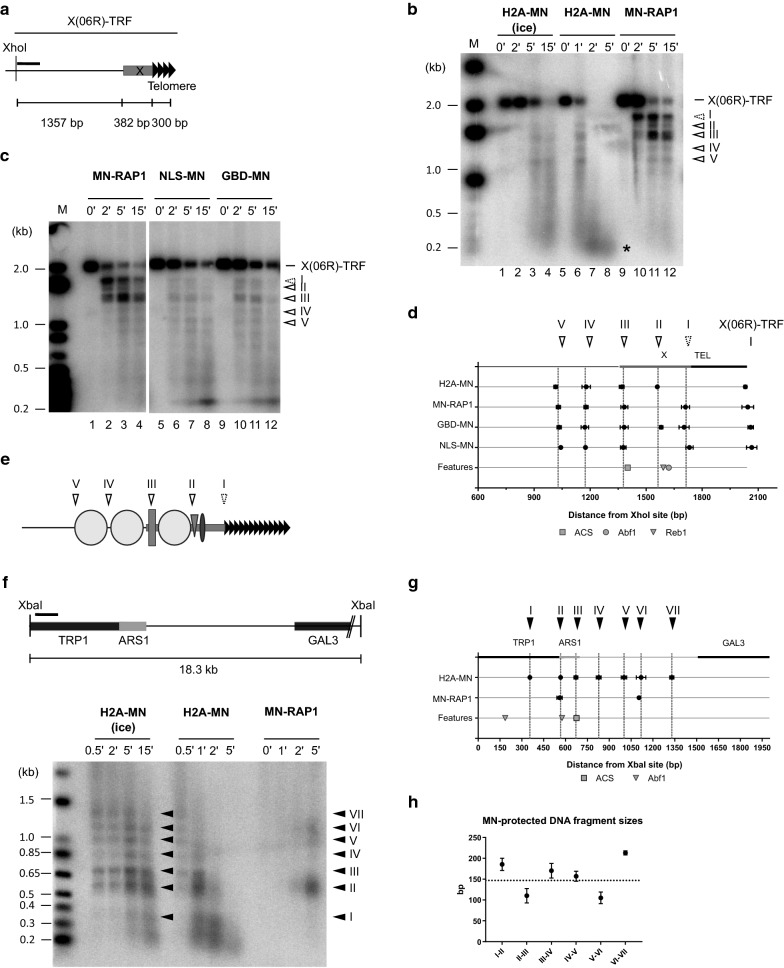Fig. 3.
Chromatin organization of the terminal TEL06R X element. a Schematic drawing of TEL06R X element with the position of XhoI site. The TEL06R-specific probe used in b and c is represented by a solid black line. b In vivo ChEC experiments with H2A-MN (EPY130) and MN-RAP1 (EPY007) analyzed on TEL06R. Southern blot with XhoI-digested genomic DNA hybridized with a TEL06R-specific probe. Arrowheads with a solid line show detectable cutting common to all MNase-fused proteins, whereas the stippled arrowhead corresponds to cutting not observed with H2A-MN. M: DNA size marker with DNA marker sizes indicated on left of gel (kb). c Same as in b with GBD-MN (W3749-1a + pRSE), NLS-MN (W3749-1a + pG1NLS2), and MN-RAP1 (EPY007) strains. d Location of MNase-sensitive sites on TEL06R with known features associated. Averaged fragment sizes ± standard deviation of MNase-induced cutting determined from at least 2 independent experiments is plotted with respect of XhoI site. Location of features (X-element, ACS, and Abf1, Tbf1 and Reb1 binding sites) is included. e Model of chromatin organization of TEL06R terminal fragment. Symbols as in Fig. 1. f Top: schematic of the analyzed TRP1ARS1 locus on chromosome IV. Short black bar indicates the probe used. Below: in vivo ChEC experiments with H2A-MN (EPY130) and MN-RAP1 (EPY007) analyzed on TRP1ARS1 locus. Southern blot with XbaI digested genomic DNA hybridized with a TRP1-specific probe. Solid black arrowheads correspond to cutting observable with H2A-MN. DNA marker sizes are indicated on left of gel (kb). g Schematic diagram of the detected MN-cut sites from f. Labeling is as in Fig. 1d. h Average distance ± standard deviation between MNase-sensitive sites identified in g

